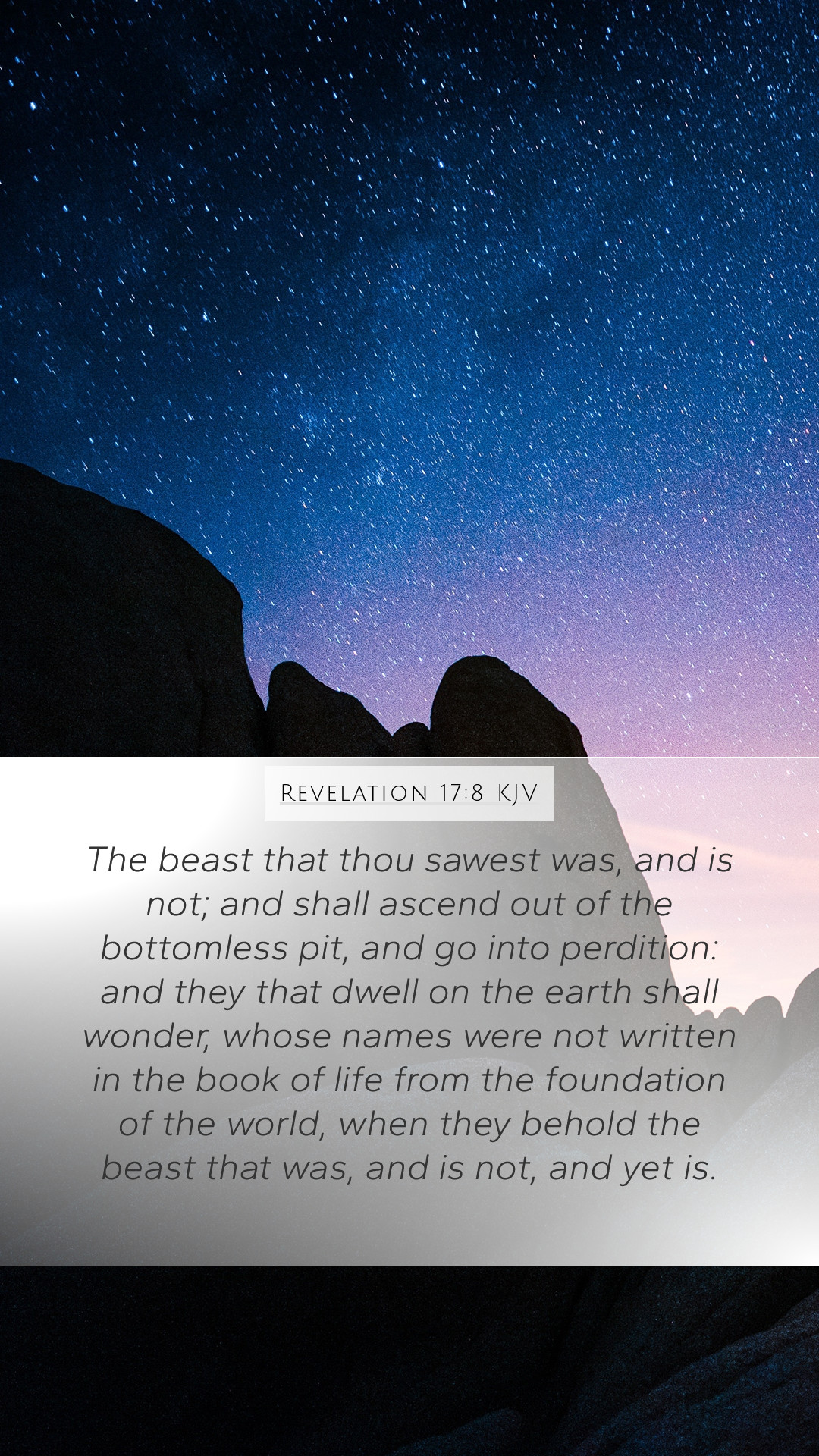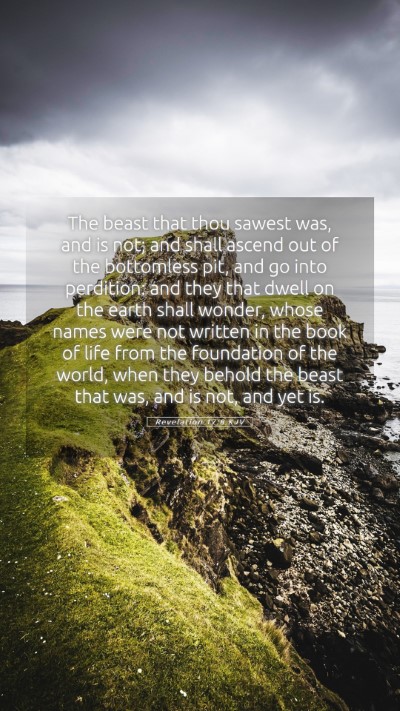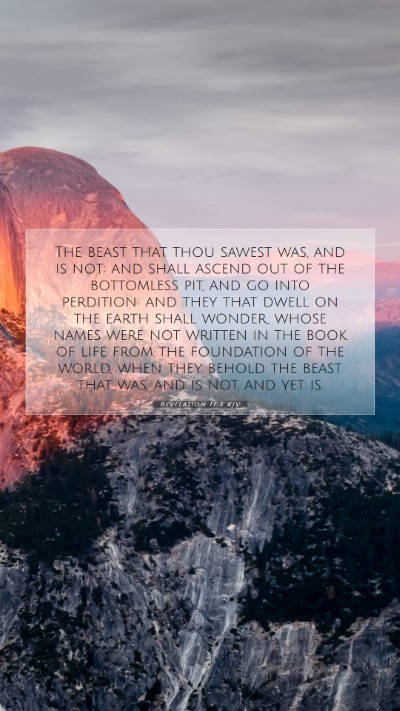Understanding Revelation 17:8
Revelation 17:8 presents a profound insight into the nature of the "Beast" that is central to the apocalyptic vision of the Apostle John. To gain a thorough understanding of this verse, we can draw from several public domain commentaries, including those of Matthew Henry, Albert Barnes, and Adam Clarke.
Verse Text
"The beast that thou sawest was, and is not; and shall ascend out of the bottomless pit, and go into perdition: and they that dwell on the earth shall wonder, whose names were not written in the book of life from the foundation of the world, when they behold the beast that was, and is not, and yet is."
Key Themes and Insights
- The Nature of the Beast: Henry emphasizes that the beast symbolizes a powerful empire or political system that appears to have dominion but ultimately leads to destruction.
- Historical Context: Barnes explains the importance of understanding the historical context of this passage, suggesting that the beast represents Rome during the time of John, with its ephemeral nature reflecting the transient power of earthly kingdoms.
- Spiritual Implications: Clarke points out that the phrase "was, and is not" suggests a cycle of destruction and renewal, underscoring the nature of evil that seems to rise again in new forms throughout history.
- Book of Life: The mention of the "book of life" serves as a reminder of God’s sovereignty and the certainty of salvation for those destined for eternal life, contrasting the fate of the beast and its followers, as noted by Henry.
- The Wonder of the Inhabitants: The wonder of those whose names are not written in the book of life reflects the deception of the beast’s power; they are captivated by its might and disregard its ultimate demise, as highlighted by Barnes.
- Apocalyptic Imagery: The imagery used in this verse is deeply symbolic, representing the unseen spiritual battle between good and evil. Adam Clarke emphasizes studying these symbols to glean understanding of God’s ultimate plan for humanity.
Comparative Exegesis
The verse can be approached through various lenses, considering its implications for theology, ethics, and prophecy. The dual nature of the beast evokes discussions on morality and the human inclination toward power, as well as the biblical promise of eventual victory over evil.
Cross References
- Revelation 13:1-8 - The rise of another beast and its authority.
- Revelation 20:10 - The final fate of the devil and the beast.
- Daniel 7:11-12 - The vision of beasts and their ultimate demise.
Application for Daily Life
Revelation 17:8 challenges believers to remain vigilant against the allure of worldly power and the seductive nature of evil. By recognizing the transitory nature of such forces, individuals can strengthen their faith and commitment to Christ, understanding that true power lies in God’s eternal kingdom.
Bible Study Resources
For those interested in deeper explorations of Revelation 17:8 and similar scriptures, various Bible study tools and resources are available:
- Bible study guides that provide enhanced understanding of the Book of Revelation.
- Online Bible study platforms allowing for interactive discussions and learning.
- Bible study lessons focusing on apocalyptic literature.
Conclusion
The exploration of Revelation 17:8 reveals layers of meaning pertinent to both its immediate context and the broader biblical narrative. By engaging with these insights through bible verse interpretations and scripture analysis, one can approach this powerful text with a well-rounded understanding.


